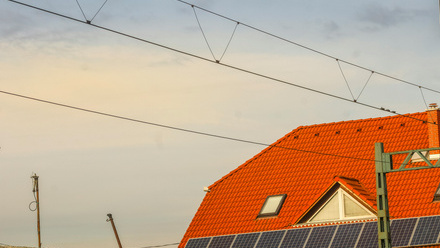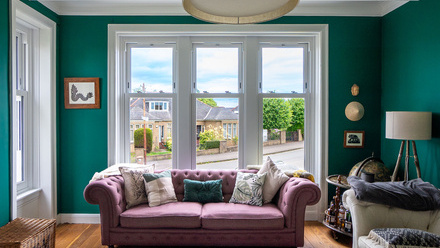Taking the plunge!
The popularity of home swimming pools over recent years has soared. The 'lockdown years', coupled with glorious summer temperatures, provided a period of reflection as homeowners adopted a new way of living. Coupled with an increase in home exercising, these factors have combined to create a growth in demand for swimming pools. In fact, according to trade body SPATA, there are now 270,000 private pools in the UK. Recent research shows that searches for properties with pools increased by 49% in 2022*.
A successful pool installation can add both a striking visual focal point for your project and an added functionality which sets a home apart. However, they are not without their complexities. A robust process for integrating a pool into your project, using the right specialists at the right time, can be the difference between a pool being a defining centrepiece that the clients will love, and a laborious project that does not quite deliver enough to justify its cost.
The following guide breaks down some of the key things to consider when designing a pool, with some ideas on how to make the design process both enjoyable, and comprehensive.
Where to start
With many different available approaches, swimming pool design and seamless integration can be complex. You will need to consider many technicalities to get the balance right between beauty and practicality.
We are often asked what the 'best' build method, size or heating system is. The answer, of course, is that it depends on what the client needs. For some, size matters. For others, running costs are more important. So it is vital to assess likely usage before starting the design, and preferably before planning permission is granted, to avoid revisions later. So aim for a detailed brief, and do not hesitate to speak to a pool specialist early, as they will understand the complications and cost implications.
What are the key characteristics of a great pool design?
No matter what your client's brief is, there are certain things which will universally contribute to a great pool design. We have broken down a few based on fifteen years of pool design and construction:
- Filtration (the water!)
- Build methods
- Heating
- Maintenance
- Aesthetics
Filtration
What is the most important characteristic of a swimming pool? The water! Pool design often focuses on physique and finishing first and foremost. However the quality of water, the impact on client experience and health is, in our view, paramount.
Finding a low maintenance, affordable, functional, beautiful and healthy solution has, in the past, been tricky. For decades designers have gone for chlorine, ozone or another chemical disinfectant process to keep the water clean. However, more recently, clients are becoming discerning about the impact of these chemicals on the human microbiome - the good microbes that keep us healthy. They are looking for new solutions which nurture holistic health.
We know how potentially harmful chlorine is for the skin, respiratory system and gut health. This leaves homeowners with pools stuck in a 'wellness paradox' - wanting to exercise for health and fun, but bathing in chemicals that could compromise the experience.
Chlorine pools can be expensive to maintain too, and although they are still specified in high-use pools, for private owners the demand for alternatives is growing.
A natural evolution: mineral water pools
The first natural pools arrived in the UK in the early 2000s and used plants and gravel beds to filter the water. They were great for environmentalists and those with plenty of time to maintain the pools but they could not be heated, were onerous to look after and had unreliable water quality.
The best of both worlds - mineral water pools and 'beneficial bacteria'
To combat these early drawbacks, Clear Water Revival, founded by mechanical engineer Andrew Cox and Aquatic Ecologist David Nettleton, spent ten years conducting R&D into natural filtration systems which did not rely on organic plants, could be heated and could be designed flexibly, indoors or outdoors.
The result of this research (in partnership with the University of West England and Cranfield University) is the latest generation of pools using 'mineral water filtration'.
Incorporating cutting-edge filtration technology, mineral pools integrate a five-stage process that uses a living microbe biofilm, ultra-fine filtration, UV light and a water mineraliser to ensure nutrients and pathogens are removed from the water and beneficial minerals added. This unique purification process uses billions of microbes to filter nutrient content from water so that nothing unsavoury can grow in your pool. In conjunction it uses spa minerals like selenium and magnesium, helping to produce superior mineralised water that revitalises skin, hair and body.
Mineral swimming pools appeal to clients who want a natural, freshwater experience that can also be heated for comfort and used all year round. The filtration equipment used within mineral swimming pools is robust, well tested and delivers the water quality expected in high end pool projects.
Whichever filtration method is specified, it is always a great idea to consult with a pool specialist pre-planning to ensure that adequate plant and machinery space has been identified so that no post planning plant room redesigns are required.
Construction methods
Bespoke or one piece
Bespoke solutions offer designers the chance to create a unique one-off pool for their clients - design without compromise. Bespoke is the more expensive option, but the craftsmanship involved delivers an unrivalled finish and full flexibility when it comes to blending the pool into the rest of your landscape or interior scheme.
One-piece pools on the other hand, are the fastest, most economical way of building a pool. Our one-piece shells are not ‘moulded’, so corners look architecturally crisp rather than soft and round and they are available in a range of sizes, colours and configurations to match almost any garden design. The pool shell is constructed off-site then delivered on the back of a lorry meaning a fast and straightforward installation. As a result, you do not have the typical time for wet-trades (concrete/tanking/tiling) so this method can cut weeks out of a build or landscaping schedule while maintaining a very high end finish.
Aesthetics - the beauty in swimming pool design
The aesthetics of a swimming pool are hugely important. We believe that pools should be designed with the intention of being permanent features in a home and should be sympathetic to their surroundings. A focal point rather than something to hide.
All clients are different, and in some cases bright, turquoise water reminiscent of a Caribbean lagoon is their goal. Often more subtle colours work better in the home counties or the Cotswolds, but no matter the aesthetic a good pool designer will aid the choice of materials that deliver visually as well as functionally. Not all tiles and materials can function in water, so care has to be taken to make a pool look more like a water feature than an interruption in the landscape. Remember details such as edges, water level, cover concealment and which materials will last when submerged in water.
Heating
Of course, except for cold water swimming enthusiasts, most clients will only use a pool regularly if it is heated. Traditionally, heating has been done by gas or oil boilers but more recently heat pumps are the go-to solution – the are electric, simple to install and efficient.
Just remember the space requirement. Air source heat pumps in particular need generous clearance distance for airflow and this will need factoring into the spatial design process early on. Remember you may also need a renewables consultant if you are planning to use solar PV as an electrical source.
Maintenance
Maintenance is unglamorous but vital to consider, going hand-in-hand with the filtration solution - the better the system, the lower the maintenance burden. A good cover is important to consider, too. Avoiding debris minimises the filtration requirement, helps retain heat and reduces running costs, making renewable heating methods more viable.
There are many different types of cover on the market, offering a balance between functionality and minimal aesthetic, particularly when retracted. An automatic cover allows quick and easy opening, while slatted covers and safety covers are good too, but too complex to discuss in full here.
Summary
Swimming pools are a significant investment for clients and should be carefully designed so that they deliver the enjoyment that makes them worthwhile. Where possible, swimming pool experts should be part of the design process from the pre-planning stage to ensure the best outcome for clients and a stress-free design process
for designers.
Filtration is a key element of swimming pool design which should not be overlooked so designers should be aware of the impact that each method has on their client’s budget, wellbeing and build requirements. Make sure to allow adequate plant room space! It is not an exciting use of space but generally, the larger the filters the better the filtration quality, so small plant rooms often constrain you ability to design an adequate filtration system.
Mineral swimming pools are the future for homeowners. They provide a great synergy of crystal-clear, clean water that supports the human microbiome without the need for chemicals or the maintenance of plant and pond life.
This article first appeared in AT Journal issue 145






